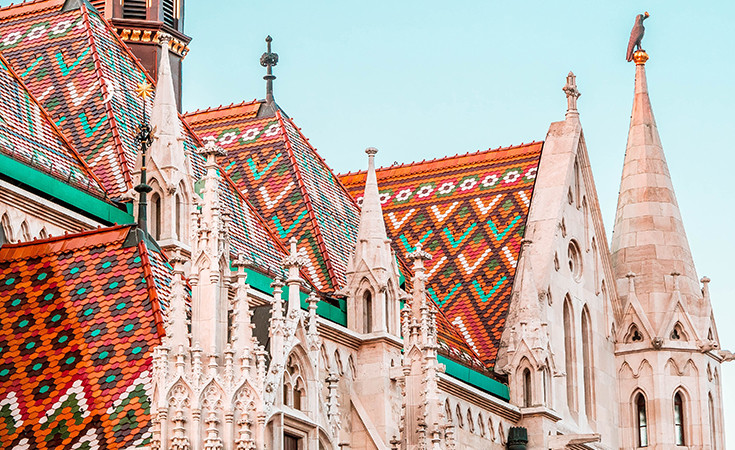
Another important landmark of Budapest is its Matthias Church, situated next to the Fisherman’s Fortress and Buda Castle. It was built in 1015 by the orders of Saint Stephen, the then-king of Hungary. The church is 80-meters tall. 200 years after construction, the church was demolished by the Mongols.
During the 2nd half of the 14th century, the church was rebuilt and renovated. It was built in late-gothic fashion. Even though it suffered various renovative processes to stand the test of time, it is today highly visited by tourists and it takes up a special place in the capital of Hungary. It got its name after Matthias Corvinus. The church was the coronation place of Franz Joseph and Charles IV. It suffered greatly during World Wat Two, when it was bombed. The church was used as a military camp at the time. Reconstruction efforts took place between 1950 and 1970 thanks to the Government of Hungary.
Today you can visit a museum situated next to the church, The Ecclesiastical Art Museum. One of the gems of its collection is surely the crown of Saint Stephen. The church is also known as Church of the Assumption of the Buda Castle, and it is a must-see attraction in Budapest.
Apart from its history, what truly makes this church stand out is its unique design. It is characteristic for its asymetric bell-towers, especially the one constructed in 1470, when King Matthias ordered for the coat of arms to be placed on the south-west wall of the tower. The church was renovated in the 19th century, with the construction efforts being led by Frigyes Schulek.
Two towers decorate the church, the Matthias Tower and the Bela Tower. Frigyes Schulek renovated the church following the results of archeological research, as well as the construction rules in place at the time of the church’s construction. The towers of the church hold unique time capsules containing archived documents about the various renovations and restorations of the church.
One of the last renovative efforts took place in 2015, when the 47-meter high panoramic balcony was opened for the public, offering a breathtaking view. The history of the church is most interesting when we take into account the two bells that survived 20 centuries, the Bell of the Holy Trinity and the Bell of Saint Charles. Apart from these two bells, the smaller bell in the church was bought in 1972 by János Fábián. Even though the smaller bell didn’t fit in with the other two, it was still used until 2010.
In the summer of 2010, three new bells were made, while the two old ones were removed for restoration works. The church currently contains six bells. The information on the restoration works on the church through the centuries is truly breathtaking.
 Working hours
Working hours
The church is open daily from 9am to 5 pm
Author of the article: Ljubiša Đuričić